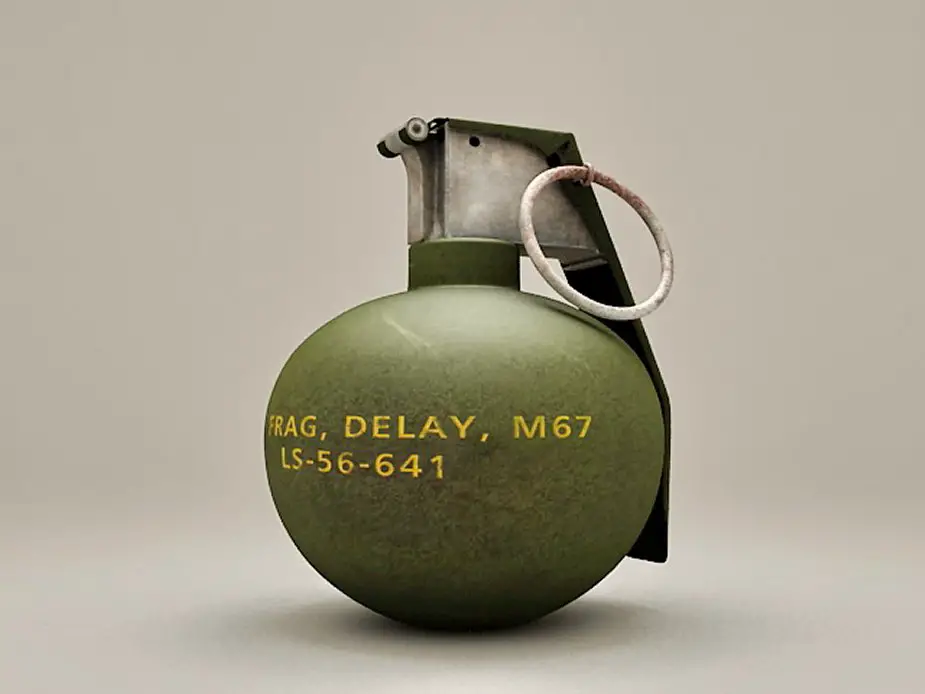Breaking news
US Army purchases M67 fragmentation hand grenades.
Day & Zimmermann Lone Star LLC, Texarkana, Texas, was awarded a $10,375,695 modification (P00011) to contract W52P1J-16-C-0001 for M67 fragmentation hand grenades.

M67 hand grenade (Picture source: CadNet)
Work will be performed in Texarkana, Texas, with an estimated completion date of Aug. 31, 2021. Fiscal 2018 other procurement, Army funds in the amount of $10,375,695 were obligated at the time of the award. U.S. Army Contracting Command, Rock Island Arsenal, Illinois, is the contracting activity.
The M67 grenade has a spherical steel body that contains 6.5 oz (180 g) of composition B explosive. It uses the M213 pyrotechnic delay fuze. The M67 grenade weighs 14 oz (400 g) in total and has a safety clip to prevent the safety pin on the grenade from being pulled accidentally. The safety pin prevents the safety lever, or "spoon" on the grenade from moving and releasing the spring-loaded striker which initiates the grenade's fuze assembly. The M67 is typically known as a "baseball" grenade, because it is shaped like a ball that can be easily thrown. Other variations include the "pineapple" grenade and the World War 2 era "stick" grenade.
The M67 can be thrown 30 to 35 metres (98 to 115 ft) by the average male soldier. Its fuze delays detonation between 4 and 5 seconds after the spoon is released. Steel fragments (not to be confused with shrapnel) are provided by the grenade body and produce an injury radius of 15 metres (49 ft), with a fatality radius of 5 metres (16 ft), though some fragments can disperse as far out as 250 metres (820 ft).




























